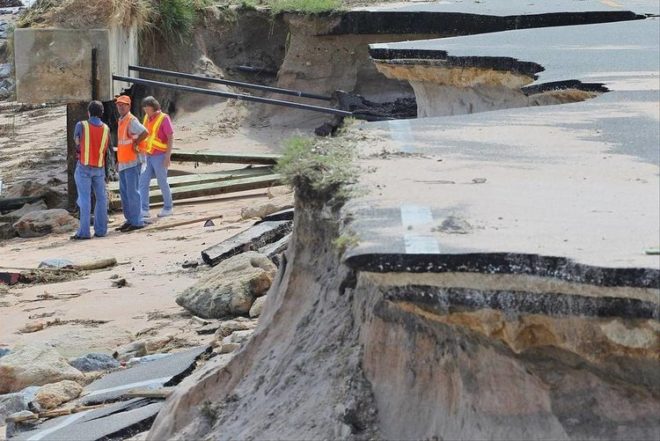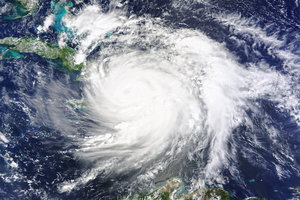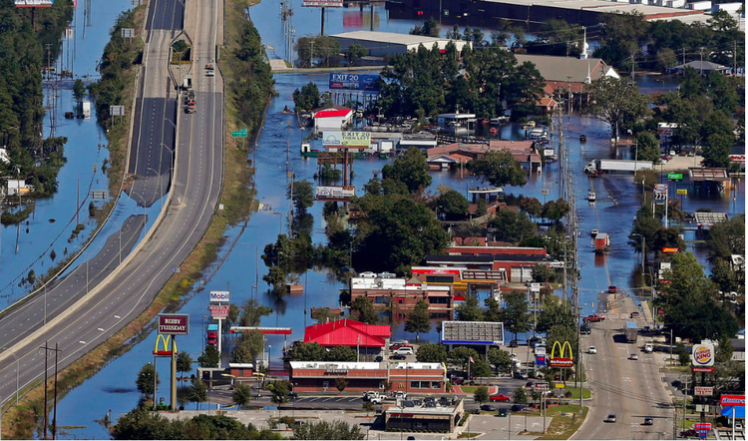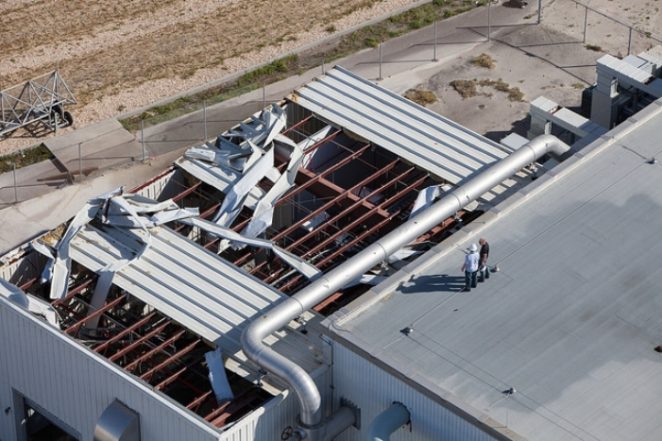

Striking images of Hurricane Matthew’s trail of devastation in the Caribbean region poured in last week, as the storm made its way through the U.S. eastern coast.
Messages, pictures and videos shared through social media told a well-known, yet heartbreaking story: the shattering impacts of disasters on communities that are still struggling to overcome the effects of previous crises — the last hurricane, the last earthquake, the last food crisis, or health epidemic. In Haiti, for example, the effects of Hurricane Matthew will almost certainly exacerbate pre-existing challenges, remnants of the 2010 earthquake that left more than 1.5 million homeless, and resulted in a grave humanitarian crisis.
“The compounded effects of shocks and long-term stressors are evidence of the importance of resilience building ”
But the story of a hurricane sweeping through a region is not only one about immediate physical devastation, documented in ‘real-time.’ The story is deeper and more far-reaching, particularly in terms of human and socio-economic development. It is a story about the impacts of disasters on livelihood options, on opportunities, and the well-being of vulnerable communities — in the short, medium and long term. For these communities, the ability to cope with, and adapt to change is not optional, but rather imperative to survival.
Hurricane Matthew has impacted vulnerable contexts where the compounded effects of shocks and long-term stressors are evidence of the importance of resilience building…

As the international development community, national and local stakeholders join efforts to respond to the storm, a focus on resilience building can be useful in four key ways:
1. BUILD CAPACITY BOTH TO RECOVER, LEAP FORWARD
Building resilience is about strengthening the capacity of vulnerable systems to absorb, adapt, and potentially transform amidst change and uncertainty. It highlights the need to focus on post-disaster relief and transitional needs (e.g. shelter, food), but also on strengthening resources and attributes that will allow affected communities to improve and leap forward: to “bounce back better.” Institutional robustness, the ability of communities to self-organize, and to learn from past experiences, to access diversified livelihoods, and to participate meaningfully in recovery processes, are just a few of the attributes that play a role in resilience building.
2. INTEGRATE MULTIPLE SCALES to inform response
Resilience requires the adoption of a holistic, integrating perspective that considers the local (household, community, and municipal), regional, national and international levels. Cross-scale integration will play a fundamental role in Hurricane Matthew’s response efforts, as strategies should build upon new and existing multi-sectoral collaboration, synergies, local knowledge, and institutional strengths.
3. EMBRACE FLEXIBILITY IN PROGRAMS, STRATEGIES
Resilience building takes place in complex, dynamic systems. In vulnerable developing contexts, characterized by constant change and uncertainty, resilience requires flexible programming and adaptive management. For stakeholders involved in hurricane response efforts, this translates into the ability to revise, learn, and adapt their activities, to ensure the relevance of programs and strategies in regards to emerging needs and priorities on the ground.
4. FOCUS ON LONG TERM solutions, NOT ‘QUICK WINS’
Resilience building is a long-term process, not a stand-alone technical solution. It requires development stakeholders to adopt a long-term perspective, fostering activities that are articulated with broader development goals. In the aftermath of a hurricane, this translates into not losing sight of the ‘big picture,’ and focusing on sustainable growth.

Hurricane Matthew will fade, and new, perhaps stronger hurricanes will hit again the already fragile communities that stand at the forefront of their effects. Resilience thinking provides an opportunity to examine vulnerable contexts under a new, deeper and more comprehensive lens, and to identify what we can do to provide the relief needed today, to achieve the sustainable growth of tomorrow.

Based in Ottawa, Ontario, the author is a senior researcher in the Resilience Program at the International Institute for Sustainable Development. Having earned a PhD in climate change resilience from the University of Manchester, Ospina is the designer of RABIT, the Resilience Assessment Benchmarking and Impact Toolkit. She can be reached via e-mail at aospina@iisd.ca. This was adapted from an Oct. 10 post on the IISD blog.

Discussion
Be the first to leave a comment.
You must be a member of the BuiltWorlds community to join the discussion.